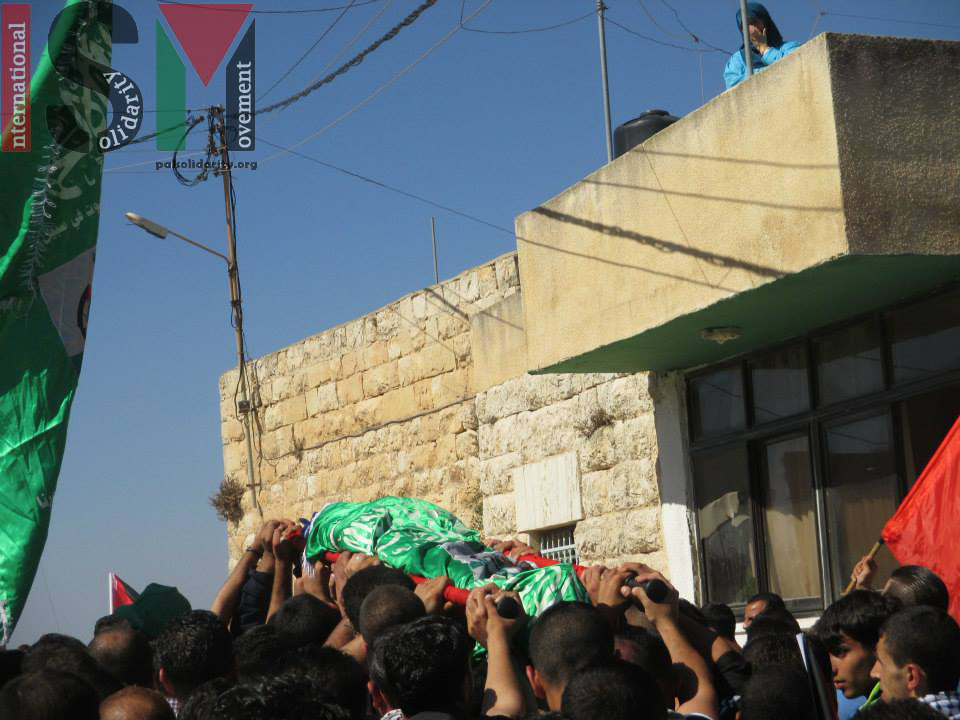Tag: Tear Gas
-
Israeli forces fire 29 tear gas canisters towards youths and schoolchildren in Hebron
19th November 2014 | International Solidarity Movement, Khalil team | Hebron, Occupied Palestine This morning in al-Khalil (Hebron), clashes broke out in the Qeitun area starting between 07:00 and 08:00 near the Qeitun checkpoint. By 08:00 the group of Palestinian teenagers and young boys present had grown to approximately 100 individuals, since the school closed, most likely due to tear…
-
VIDEO: 14-year-old violently arrested in Hebron
6th November 2014 | International Solidarity Movement, Khalil Team | Hebron, Occupied Palestine On October 30th, a 14-year-old boy was violently arrested by Israeli forces in al-Khalil (Hebron). Due to a teachers strike in solidarity with underpaid public workers, school in Hebron finished at 10:00 in the morning. Several young boys threw stones towards the military, armed…
-
Clahes after funeral for murdered Orwa Hammad
27th October 2014 | International Solidarity Movement, Ramallah team | Silwad, Occupied Palestine Yesterday a funeral was held for 14-year-old Orwa Abd al-Hadi Hammad, shot dead by the Israeli military on Friday, in the small village of Silwad close to Ramallah. Orwa was shot dead by Israeli forces on Friday, during a demonstration at the edge of the small village of…



